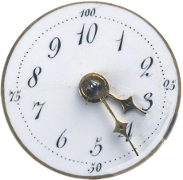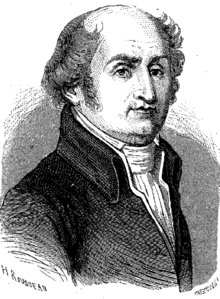The French Revolutionary Calendar

The French Revolutionary Calendar (or Republican Calendar) was introduced in France on 24 November 1793 and abolished on 1 January 1806. It was used again briefly during the Paris Commune in 1871.
What does a Republican year look like?
A year consists of 365 or 366 days, divided into 12 months of 30 days each, followed by 5 or 6 additional days. The months were:
| 1. | Vendémiaire | 7. | Germinal |
| 2. | Brumaire | 8. | Floréal |
| 3. | Frimaire | 9. | Prairial |
| 4. | Nivôse | 10. | Messidor |
| 5. | Pluviôse | 11. | Thermidor |
| 6. | Ventôse | 12. | Fructidor |
The year was not divided into weeks, instead each month was divided into three décades of 10 days, of which the final day was a day of rest. This was an attempt to de-Christianize the calendar, but it was an unpopular move, because now there were 9 work days between each day of rest, whereas the Gregorian Calendar had only 6 work days between each Sunday.
The ten days of each décade were called, respectively, Primidi, Duodi, Tridi, Quartidi, Quintidi, Sextidi, Septidi, Octidi, Nonidi, Decadi.
The 5 or 6 additional days followed the last day of Fructidor and were called:
| 1. | Jour de la vertu (Day of virtue) |
| 2. | Jour du génie (Day of genius) |
| 3. | Jour du travail (Day of labour) |
| 4. | Jour de l’opinion (Day of opinion) |
| 5. | Jour des récompenses (Day of rewards) |
| 6. | Jour de la révolution (Day of the revolution) (the leap day) |
(Different sources refer to these days as either jour (“day”) or fête (“celebration” or “feast”).)
Each year was supposed to start on autumnal equinox (around 22 September), but this created problems as will be seen in the description of leap years below.
How does one count years?
Years are counted since the establishment of the first French Republic on 22 September 1792. That day became 1 Vendemiaire of the year I of the Republic. (However, the Revolutionary Calendar was not introduced until 24 November 1793.)
Years in the Republican Calendar were normally written as Roman numerals.
What years are leap years?

Gilbert Romme (1750-1795)
Leap years were introduced to keep New Year’s Day on autumnal equinox. But this turned out to be difficult to handle, because equinox is not completely simple to predict.
In fact, the first decree implementing the calendar (5 Oct 1793) contained two contradictory rules, as it stated that:
- the first day of each year would be that of the autumnal equinox
- every 4th year would be a leap year
In practice, the first calendars were based on the equinoxial condition.
To remove the confusion, a rule similar to the one used in the Gregorian Calendar (including a 4000 year rule) was proposed by the calendar’s author, Gilbert Romme (pictured), but his proposal ran into political problems.
In short, during the time when the French Revolutionary Calendar was in use, the following years were leap years: III, VII, and XI.
How does one convert a Republican date to a Gregorian one?
The following table lists the Gregorian date on which each year of the Republic started:
| Republican year | Started on | Republican year | Started on | |
|---|---|---|---|---|
| I | 22 Sep 1792 | VIII | 23 Sep 1799 | |
| II | 22 Sep 1793 | IX | 23 Sep 1800 | |
| III | 22 Sep 1794 | X | 23 Sep 1801 | |
| IV | 23 Sep 1795 | XI | 23 Sep 1802 | |
| V | 22 Sep 1796 | XII | 24 Sep 1803 | |
| VI | 22 Sep 1797 | XIII | 23 Sep 1804 | |
| VII | 22 Sep 1798 | XIV | 23 Sep 1805 |






